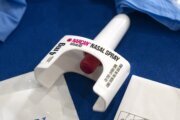You’re just getting comfortable with the idea that your loved one will be living in a nursing home.
Maybe you’re used to being able to monitor care they received at home. So what can you do to monitor their care and safety in the nursing home?
Long-term care facilities — like other care providers — aren’t immune to health hazards, from disease outbreaks to residents not being given medications as recommended — a concern frequently raised by nursing home residents and their loved ones. “Whether they’re not administered properly, at the right time of day or not given at all, or perhaps given the wrong medication, that was the fourth most common complaint across the country last year,” says Amity Overall-Laib, director of the National Long-Term Care Ombudsman Resource Center. Funded by the federal Administration on Aging, NORC provides training, technical assistance and support to ombudsman programs across the country in states and local areas that field complaints about nursing homes. Ombudsman programs also provide consumer support and education, from choosing a nursing home to ensuring a resident receives proper care. “The Older Americans Act requires that every state has an ombudsman program, and they act as advocates for residents in long-term care facilities, such as nursing homes and assisted living,” Overall-Laib notes.
[See: 7 Red Flags to Watch for When Choosing a Nursing Home.]
Ombudsman programs receive quite a range of complaints, she says. “The top complaint across the country, for at least the last five years, has been related to discharge or eviction from the nursing home,” Overall-Laib says. “The reason varies, but often times it’s because facilities are claiming that they can’t meet the resident’s needs any longer, and so they’re trying to transfer them to another nursing home.” In other cases, a resident may be transferred to a hospital, such as for an assessment or treatment, and then they’re not readmitted to the nursing home, she says. This can leave residents and family members scrambling to try to determine what their options are.
The second most common complaint is failure by staff to respond to a resident’s request for assistance — like when the resident would use a call light to request help, Overall-Laib says. The third most common complaint last year related to staff attitudes — “so basically not treating residents with dignity and respect and providing individualized care,” she says.
It’s not that whatever can go wrong necessarily will. Many nursing homes have top-notch reputations that reflect attentive, individualized, safe and personally appropriate care. However, the potential dangers are real also, providing extra incentive to monitor the care of a loved one in a nursing home — just as you might with a family member in any health care setting.
A meta-analysis of previous research published last month in the American Journal of Infection Control determined that 27 percent of nursing home residents are colonized with multidrug-resistant gram-negative bacteria, which are associated with an increasing proportion of infections among nursing home residents. “Meaning that 1 in 4 have it,” says lead study author Sainfer Aliyu, a registered nurse, who has a doctorate in nursing from Columbia University School of Nursing.
The multidrug-resistant gram-negative bacteria — so named because it appears negative, or pinkish or red when subjected to a Gram stain test used to classify the bacteria — is increasingly resistant to most available antibiotics, according to the Centers for Disease Control and Prevention. Colonization refers to germs being on or in the body, and we are all colonized by many bacteria; but the spread of germs can lead to infection that sickens a person. Infections from MDR-GNB are difficult to treat and, the researchers noted, associated with increased hospitalizations and deaths.
That’s why, experts say, it’s important that nursing homes make this a priority, from handwashing by nursing home staff and residents to having a designated staff member in charge of infection control — often a nurse with additional training in infection control, or an infection preventionist, whose primary responsibility is infection prevention, says Linda Greene, a registered nurse and president of the Association for Professionals in Infection Control and Epidemiology. “The facility should have an infection prevention plan and conduct an annual risk assessment that identifies the specific infection risks based upon the patient population,” she says. Families should ask about infection control policies and practices before selecting a nursing home and keep an eye on follow-through by nursing homes — like paying attention to whether staff wash their hands before attending to their loved ones and kindly asking them to do so if not.
[See: The Best Ways for Nursing Home Residents to Stay Active.]
When looking out for the best interests of a loved one, there is no substitute for visiting them. “The No. 1 thing to do is to visit as many times, and at different times, as possible,” says Robyn Grant, director of public policy and advocacy for The National Consumer Voice for Quality Long-Term Care. A national organization advocating for quality of care and quality of life for individuals who are receiving long-term care, Consumer Voice operates NORC. “Vary the time of day that you go in,” she recommends. In addition to daytime visits, visit in the evenings, on weekends and holidays. Because if the facility is understaffed, those are particular times when you will see that, she says.
Pay attention to inspection reports, as well. The Centers for Medicare and Medicaid Services contracts with the states to do the on-the-ground inspections. “They are required to do them every nine to 15 months, under federal law — so roughly once a year,” Grant says. With revised regulations, three years’ worth of inspection reports must be made available at nursing homes, she says. Consumers can also access them online by going to Nursing Home Compare on Medicare.gov.
Besides checking inspection reports when shopping nursing homes, it’s important to continue to review those reports once a loved one has taken up residence — even for facilities that have a good track record. “It can give you a sense of systemic problems in the facility that could impact your loved one,” Grant says.
The most common cited deficiencies range from employing staff who have been found guilty of abuse to not establishing an infection control program. A common issue linked to understaffing is the overmedication of some residents. “The inappropriate use of antipsychotic medications, particularly with residents with dementia — that’s another concern that we hear [about],” Grant says. Often, she says, individuals with dementia may be crying out or lashing out, and stretched-thin staff try to calm them with medication instead of providing individualized care and drilling down to better determine their needs.
It’s important for residents and families to know their rights. Most nursing homes receive federal funding. As a result, they must meet regulations; those include honoring resident rights (section 483.10, page 68,849). For example, “A facility must treat each resident with respect and dignity and care for each resident in a manner and in an environment that promotes maintenance or enhancement of his or her quality of life, recognizing each resident’s individuality.”
Should an issue arise, the first step is to take it up with the nursing home, Overall-Laib says. Nursing homes are required to have an official grievance procedure and residents (or their advocates if a resident isn’t able to understand due to cognitive issue, like advanced dementia) should be made aware of the procedure. According to regulations, that response must be put in writing and should be provided in response to a complaint. The matter can be escalated as needed to supervisors and corporate staff.
If a response isn’t received, isn’t sufficient or the problem isn’t resolved, residents and their loved ones can contact the state agency responsible for inspections — often the health department — or their state or local, where available, ombudsman program. Consumer Voice provides an interactive map to locate the nearest ombudsman program.
[See: 10 Options to Consider Besides a Nursing Home.]
But even before an issue might arise, be proactive in speaking with nursing home staff to ensure your loved one has a well-developed care plan. Insist on speaking to staff in different departments who interact with your loved one, including (but not limited to) those who provide care. And link up with other families of residents in the facility so you can provide support and be each other’s eyes and ears to look out for family, experts say. Often groups called family councils already exist (and families can start councils) for just this purpose to advocate on behalf of residents. “Family members come together and they can share with each other concerns, problems and frankly sometimes they watch out for each other’s loved ones — because they’re all interested in good care,” Grant says.
While certainly the best nursing homes should already be looking out for residents, experts say it’s an involved job — and it never hurts to have more eyes and ears to ensure the safety of a loved one.
More from U.S. News
5 Common Preventable Medical Errors
Do’s and Don’ts of Home Medical Devices
14 Ways Caregivers Can Care for Themselves
How to Monitor the Care of a Loved One in a Nursing Home originally appeared on usnews.com







